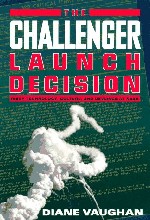The Challenger Disaster, 24 Years Later
 Today marks the 24th anniversary of the Challenger shuttle disaster. On January 28, 1986, 73 seconds into flight, the NASA rocket exploded and disintegrated over Cape Canaveral. The tragedy was especially devastating because schoolchildren in classrooms across the country watched the launch live in support of New Hampshire teacher Christa McAuliffe. What began as a celebration quickly turned into calamity, as the plume of the explosion seared into a generation’s memory.
Today marks the 24th anniversary of the Challenger shuttle disaster. On January 28, 1986, 73 seconds into flight, the NASA rocket exploded and disintegrated over Cape Canaveral. The tragedy was especially devastating because schoolchildren in classrooms across the country watched the launch live in support of New Hampshire teacher Christa McAuliffe. What began as a celebration quickly turned into calamity, as the plume of the explosion seared into a generation’s memory.
In the aftermath of the disaster, journalists and investigators blamed production problems and managerial wrong-doing. The Presidential Commission uncovered a flawed decision-making process at the space agency, citing a well-documented history of problems with the O-ring and a dramatic last-minute protest by engineers over the Solid Rocket Boosters as evidence of managerial neglect.
But there was much more going on behind the scenes. Ten years after Challenger, the Press published The Challenger Launch Decision: Risky Technology, Culture, and Deviance at NASA by sociologist Diane Vaughan. In it, she recreates the steps leading up to the fateful launch decision, contradicting conventional interpretations to prove that what occurred at NASA was not skulduggery or misconduct but a disastrous mistake. In retelling how the decision unfolded through the eyes of the managers and the engineers, Vaughan uncovers an incremental descent into poor judgment, supported by a culture of high-risk technology. She reveals how and why NASA insiders, when repeatedly faced with evidence that something was wrong, normalized the deviance so that it became acceptable to them.
No safety rules were broken. No single individual was at fault. Instead, the cause of the disaster is a story not of evil but of the banality of organizational life. This powerful work explains why the Challenger tragedy must be reexamined and offers an unexpected warning about the hidden hazards of living in this technological age.